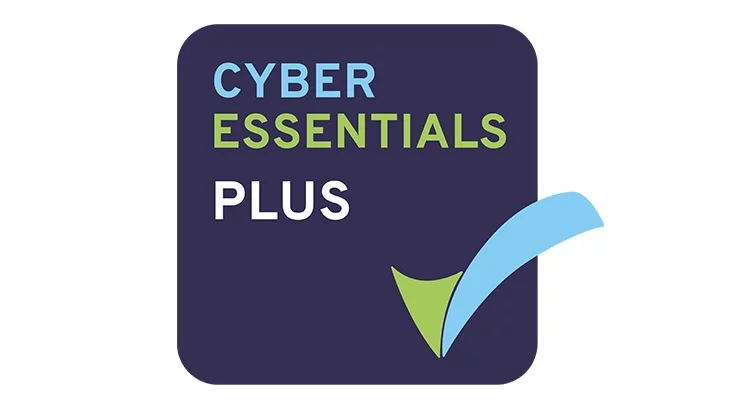Enterprise Asset Management Software
Maximise productivity, reduce downtime, and gain complete visibility of every asset with our intelligent Enterprise Asset Management (EAM) solution. Manage inspections, maintenance, and compliance across multiple sites and teams. All from a single, connected platform.
What is Enterprise Asset Management (EAM)?
Enterprise Asset Management (EAM) software enables organisations to monitor, maintain, and optimise physical assets throughout their entire lifecycle, from acquisition to disposal.
It centralises data from equipment, vehicles, infrastructure, and field teams to provide full visibility of asset location, status, and performance. A connected EAM platform eliminates manual processes, reduces maintenance costs, improves compliance, and empowers smarter, data-driven decisions.
EAM software typically supports:
-
Asset tracking and lifecycle management
-
Preventive and predictive maintenance scheduling
-
Compliance and inspection management
-
Resource allocation and workforce planning
-
Mobile field operations and data capture
Mobile Enterprise Asset Management
Your field workforce needs visibility wherever they are. A mobile-first EAM platform connects back-office teams and field engineers in real time, ensuring assets are located, inspected, and maintained with accuracy and speed.
With mobile EAM software, operatives can:
-
Access up-to-date asset information, documentation, and service history
-
Complete inspections, capture photos and forms, and sync data instantly
-
Locate assets via GPS and IoT sensors before travelling to site
-
Receive automatic scheduling updates and route optimisation
-
Record compliance data and audit information at the point of service
This improves inspection accuracy, reduces paperwork, and empowers your teams to deliver a consistent, high-quality service across all locations.
Key Capabilities of EAM Software
Enterprise Asset Management software is more than just a tracking tool. It’s the foundation of operational efficiency.
Key features include:
1. Asset Tracking & Lifecycle Management
Track every piece of equipment, vehicle, or infrastructure across its lifecycle. Gain real-time visibility of asset health, location, and performance to prevent breakdowns and extend asset lifespan.
2. Inspection & Compliance Automation
Digitise inspections with intuitive mobile forms, automated scheduling, and photo or video capture. Maintain a consistent inspection approach across all assets and sites.
3. Workforce & Resource Allocation
Match the right technician, skills, and parts to every job. Reduce unnecessary travel, improve first-time fix rates, and maintain service levels across multiple regions.
4. Data-Driven Insights
Track every piece of equipment, vehicle, or infrastructure across its lifecycle. Gain real-time visibility of asset health, location, and performance to prevent breakdowns and extend asset lifespan.
5. Integration with Field Service Operations
Connect EAM with field service management, work order management, and utility works solutions to create a unified operational view. Data flows seamlessly between field and back-office systems for end-to-end efficiency.
Uses of EAM in Field Service

Energy & Utilities
Enterprise asset management for utilities helps companies manage water, gas, electricity, and energy infrastructure with greater efficiency and reliability.
Benefits:
-
Maintain ageing or complex networks with real-time asset visibility
-
Schedule crews and preventive maintenance across multiple locations
-
Minimise downtime and service disruptions
-
Ensure compliance with regulatory standards

Property & Facilities Management
For organisations managing large property portfolios, EAM reduces operating costs and improves service delivery across hundreds or thousands of buildings.
Benefits:
-
Automate inspections and maintenance scheduling
-
Streamline repair work and inventory management
-
Reduce repeat site visits and travel inefficiencies
-
Ensure tenant safety and compliance with regulations

Healthcare
Healthcare enterprise asset management ensures medical equipment is always operational, compliant, and accessible when needed.
Benefits:
-
Centralise equipment tracking across multiple facilities and departments
-
Maintain critical devices through preventive and predictive maintenance
-
Capture compliance and audit data digitally
-
Improve operational efficiency and patient care

Logistics & Transportation
EAM solutions for logistics organisations improve fleet and equipment management, reducing downtime and operational costs.
Benefits:
-
Monitor vehicles, vans, lorries, aircraft, and trains in real time
-
Schedule maintenance and manage spare parts inventory efficiently
-
Optimise routes and fuel usage
-
Minimise environmental impact and ensure continuous service delivery
What is Asset Management Inspection Software?
Asset Management Inspection Software (AMIS) automates asset inspections and identifies the real-time location of equipment, vehicles, and other mobile assets.
Field service teams can receive instant updates and location data directly to their mobile device before arriving on-site.
With AMIS, your field workforce can:
- Improve inspection performance and accuracy
- Automatically sync inspection results to central dashboards
- Monitor IoT-connected assets continuously for condition-based maintenance
Asset Management FAQs
What is an Enterprise Asset Management System?
An Enterprise Asset Management (EAM) system is a software solution that helps organisations manage their physical assets throughout their lifecycle. It encompasses maintenance planning, predictive and preventative measures, and strategic asset management. EAM solutions aim to improve asset performance, reduce operational costs, and enhance return on assets.
What is the difference between ERP and EAM?
ERP (Enterprise Resource Planning) and EAM (Enterprise Asset Management) systems manage and optimise business operations. The primary difference is that ERP systems have a broader scope, focusing on all resources within an organisation, including finance, human resources, supply chain, and more. In contrast, EAM systems specifically focus on the optimal management, maintenance, and lifecycle tracking of a service organisation’s physical assets.
What are the components of EAM?
The components of an EAM system often include 1) Asset lifecycle management to track assets from acquisition to disposal. 2) Maintenance management to ensure assets are maintained effectively. 3) Work order management to schedule and track maintenance tasks. 4) Inventory management to control spare parts and equipment. 5) Reporting and analytics to monitor asset performance and costs.
Why do we need EAM?
EAM is essential because it helps organisations manage and optimise the use of their physical assets. This can lead to improved operational efficiency, extended asset lifecycles, reduced downtime, and cost savings. It also aids in compliance with regulatory requirements related to asset management. In short, EAM is a critical tool for maximising the value of an organisation’s physical assets.
What industries use EAM?
EAM systems are used by organisations that manage significant physical assets, such as machinery, vehicles, equipment, and infrastructure. This includes industries like manufacturing, utilities, transportation, government, healthcare, and more. These organisations use EAM to optimise asset performance, reduce costs, improve maintenance processes, and enhance operational efficiency.
What are the benefits of mobile EAM solutions?
Mobile EAM software gives field teams real-time access to asset information, inspection forms, and service history on mobile devices. This enables teams to locate assets via GPS, capture photos and compliance data on-site, and sync information instantly with back-office systems. Mobile EAM improves inspection accuracy, reduces paperwork, and increases workforce efficiency across multiple locations.
Can EAM help reduce maintenance costs?
Yes. Enterprise Asset Management software reduces costs by automating preventive and predictive maintenance, optimising resource allocation, and minimising downtime. By providing actionable insights into asset performance and maintenance trends, EAM enables organisations to plan repairs more efficiently and avoid costly reactive maintenance.
To work out the ROI that EAM can deliver for your company, visit here.
What is the best asset management tool?
The best asset management tool depends on your organisation’s size, industry, and operational needs. A strong enterprise asset management (EAM) tool should provide real-time visibility of assets, streamline preventive and predictive maintenance, enable mobile inspections, and integrate with field service and work order management. Look for a tool that centralises asset data, improves workforce efficiency, ensures compliance, and supports data-driven decision-making across all sites and teams.






